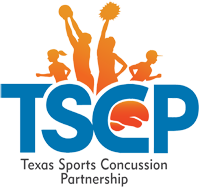With recent increased media coverage on concussions and their possible short- and long-term consequences, scrutiny on the management and prevention of concussions is at an all-time high. Management of concussions has changed drastically in the past 5-10 years with improved awareness and updated published management guidelines. With that increased publicity, there is more interest in the development of products to prevent or treat concussions more effectively. Several product categories have been developed aimed at preventing or treating concussions. This article will discuss these products and why they are not all that they claim.
A concussion is a change in brain function caused by trauma. The trauma may either be directly to the head or from a blow to the body, which transmits force to the head. The brain abruptly moves within the skull, setting off a biochemical cascade at the microscopic level that causes the common symptoms, including headache, nausea, dizziness, confusion, and intolerance to light and/or sound. With proper treatment, which is physical and cognitive rest, the biochemical changes and symptoms improve in about 7-10 days.
The Holy Grail in concussion management is finding a product or technology that will prevent or eliminate concussions. In football, the most obvious technology to target is the helmet. Recent advances in helmet technology, including the Riddell Revolution, the Riddell 360, and the Xenith line of helmets, have been touted to decrease the risk of sustaining a concussion. While they do a good job of absorbing impact in a lab setting, it has not yet been determined whether or not they reduce concussion incidence. The difficult part in determining the effect of helmets on concussion incidence is that the advent of these helmets also coincides with rule changes and increased awareness. Any decline in concussion incidence may be due to any or all of these factors. It would be difficult to tease out the true effect of the helmet. When helmets were first introduced, they were designed to prevent skull fractures. They do a great job of that. But what even the best-padded helmet cannot do is prevent the movement of the brain within the skull, which is the underlying mechanism of a concussion.
A recent innovation related to the helmet is the Guardian cap, a soft-shell helmet cover designed to wear over the helmet. This is intended to diminish impact up to 33%, as measured in a lab, theoretically reducing concussion incidence. There is currently no evidence that this cushioning diminishes concussion incidence. As is the case with helmets, these covers may diminish impact, but do not prevent the movement of the brain within the skull. Both the Guardian manufacturer and the helmet manufacturers include on their websites that no helmet or helmet pad can prevent concussion and that researchers have not reached an agreement on how the results of impact absorption tests relate to concussions.
For those athletes who participate in sports without helmets, such as soccer, basketball, and cheerleading, the risk of concussion is still present. The use of padded headbands, such as the ForceField FF headband, has been suggested to protect from concussions. As with the helmets and helmet pads, these have not been shown to reduce the incidence of concussion.
The use of mouthguards has also been suggested to protect an athlete from concussion. The rationale is to cushion the lower jaw from impacting the upper jaw and to stabilize the head by strengthening the neck muscles. Again, these have never been demonstrated to actually reduce concussion incidence. However, mouthguards do a good job of preventing dental trauma and should be used during participation.
Several dietary supplements have been marketed to promote faster healing after a concussion. While these supplements may not have harmful ingredients, the insinuation that they will promote faster healing may prompt an athlete to try to return to activity before he or she is ready, putting him or her at risk for a worse injury. The FDA released a statement in August 2014 warning consumers of any dietary supplement that makes this claim.
The goal of this article is not to advocate against the use of protective equipment; protective equipment serves an important role in prevention of other injuries in athletics and should be used. The concern with a certain protective device touting itself as a preventive agent for concussions involves the athlete thinking he or she is now concussion-proof. This may lead to risky behavior. This is known as risk compensation, where the use of protective equipment results in behavioral change such as the adoption of more dangerous playing techniques, which can actually increase injury rates.
Unfortunately, many concussions cannot be prevented. Even outside of athletics, one could suffer a concussion by walking into a pole or having a can of peas fall on his head. Sports will always entail risk. Our job is to reduce that risk. Even though we don’t have a product or device that can reduce concussions, we can help to reduce them through technique and rule changes. Teaching football players to tackle without leading with their heads, teaching proper technique to soccer players who head the ball, and limiting contact time during weekly practice are all strategies to reduce concussion incidence. If a concussion does occur, proper recognition, prompt removal from activity, instituting physical and cognitive rest until the athlete is no longer symptomatic, and employing a stepwise return to play protocol remains the best treatment plan.

Leave a Reply